Labor for Human Rights: The Workers Rights Movement Today
The Labor Day holiday weekend began with fast food workers in over 60 cities engaging in a one-day strike–the latest and largest of a series of walk-outs by food service and retail employees. By the end of the weekend, the Coalition of Immokalee Workers will have completed public demonstrations at seven Publix grocery stores in Florida, in their continuing effort to force the giant retailer to join the Fair Food Program, and Our Walmart will have finished eleven actions protesting the firing of workers who were organizing.
Historically, Labor Day is the time of taking the temperature of the labor movement, and the thermometer this year shows labor activism at a feverish level. Alternative labor groups, which include “workers centers” such as the Workers Defense Project, Workers Dignity, and NESRI partners like the CIW, Vermont Workers Center, and the United Workers, seem to be gaining traction. [Josh Eidelson’s January article in Prospect aptly describes the “Alt-Labor” sector, and its relationship to unions.]
The CIW began its impressive trajectory in the mid 1990s with walkouts similar to the current food and retail worker actions, and subsequently reversed a 10-year decline in farmworker real wages. But instead of forging the workers into legally unprotected unions–a tactic that proved successful for industrial workers in early 1900s and the United Farmworkers in the 1970s–CIW brought consumers, churches, and students into a coordinated offensive against the ultimate beneficiaries of cheap farmwork: giant food retailers like Taco Bell, McDonalds, and Burger King.
But coalescing this force, now known as Fair Food Nation, to support worker aims was more than tactical. It was recognition that workers are part of a larger community, inextricably intertwined economically, socially, and spiritually. Worker rights are part of a broader panoply of human rights, and the quest of the farmworkers is the quest of all of us: to work with dignity.
Indeed, CIW’s universal message, participatory culture, and leadership development is emulated in much of Alt-Labor, and organized labor has come to understand the utility of “social justice” or “community based” organizing, one that recognizes that universality is a key to realizing economic rights.
This relationship between Alt- and organized labor began in the 1970s (chronicled in Vanessa Tait’s Poor Workers Unions). The success of the welfare rights movements led organizers to link those on public assistance with low-wage workers, to form the Rhode Island Workers Association (RIWA). RIWA successfully organized unemployed and low-wage nursing home workers, but fiscal challenges eventually forced it to affiliate with the Service Employees International Union (SEIU).
ACORN’s United Labor Unions (ULU) picked up the ball and forged workplace campaigns that were frequently linking with community challenges and organizing. ULU achieved limited success organizing fast food workers in Detroit, modest gains among New Orleans hospitality workers, and astounding victories with Boston and Chicago home health care workers. As with RIWA, financial considerations prompted them to accept SEIU’s offer of affiliation in 1984.
Organized labor took notes on the Alt-Labor initiatives. Within two years, SEIU launched the “Justice for Janitors” campaign, which used a community-labor approach to combine workplace organizing with local political issues, such as city budgets and economic development policy. UNITE HERE, and the Communications Workers of America also began to adopt community-based approaches, and experiment with organizing traditionally excluded workers.
As those workers continued to find homes among Alt-Labor in the explosion of worker centers in the 1990s (which included groups like the Chinese Workers Staff Association, the Workplace Project, La Mujer Obrera), unions such as SEIU, UFCW, and UNITE HERE came to establish community-labor partnerships as the preferred model for union organizing and issue campaigns. These partnerships now go beyond underwriting some worker center campaigns, and include efficacious development related initiatives such as the Los Angeles Alliance for a New Economy, Central Arizonans for a New Economy, and the fledgling Baltimore Fair Development Campaign, which includes the United Workers, a NESRI partner.
There are now a number of unions that clearly embrace a universal and equitable approach to the fight for economic rights. It will remain to be seen whether others come on board, and whether these efforts also will translate to increased worker democracy and workplace accountability. CIW has broken new ground there as well, establishing a Fair Food Program that avoids the worker lethargy and “business unionism” that traditional collective bargaining agreements can breed.
The history of organized labor and its current strategy is particularly relevant to the movement for economic human rights in the United States. There are few social movements that can better show us the myriad challenges of fighting for economic rights here at home, and provide us with concrete lessons learned. Those lessons have caught the attention of corporate moguls, who have initiated a public campaign to crush this latest form of worker activism.
That corporate backlash, however inevitable, provides us hope this Labor Day that the movement for economic justice is gaining ground.
